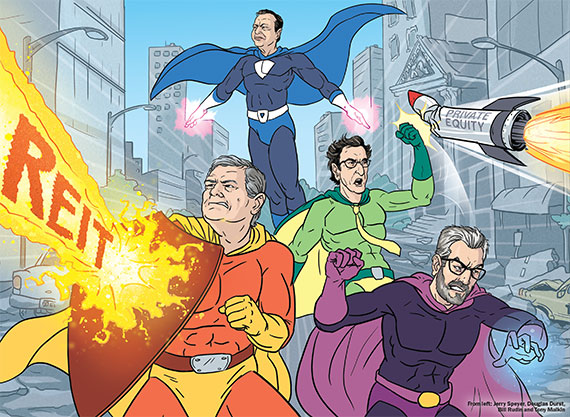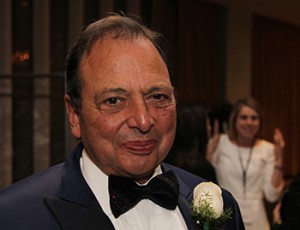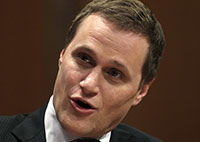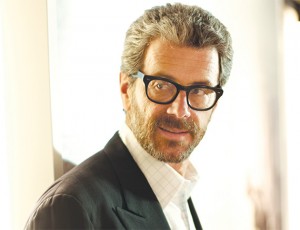
Family real estate dynasties — from the Rockefellers to the Zeckendorfs — have been building up the Manhattan skyline since the days of John Jacob Astor back in 1799.
But in the past few decades family firms have lost their dominant stature in the industry.
Over the past five years, the biggest commercial investors in New York City real estate have been SL Green Realty and Vornado Realty Trust — both publicly traded real estate investment trusts. And mega private equity firms, like the Blackstone Group, have been aggressively buying up buildings, to boot.
Faced with these aggressive rivals, family firms have shed significant market share.
“You have to change or adapt, or else you don’t survive,” said Bill Rudin, CEO of Rudin Management, a third-generation family company.
This month, The Real Deal looked at how four storied New York City family real estate dynasties — the Rudins, Dursts, Speyers and Malkins — are doing just that.
The families, which all own major Manhattan real estate portfolios, stand out for one key reason: they have radically changed their strategies to compete.
[vision_pullquote style=”3″ align=”center”]
[/vision_pullquote]
They are venturing into new markets (whether in Queens or China), they are teaming up with tech tenants, going public and coming up with other novel strategies to stay in the game.
Unlike many of their family firm counterparts, they are adapting aggressively to the 21st century, rather than simply sitting on assets amassed years ago.
Are dynasties doomed?
In his 1997 book “The Visible Hand,” the leading U.S. business historian Alfred Chandler argued that public companies led by professional managers would drive real estate growth and eventually push owner-operated firms out of the market.
While that hasn’t fully happened yet, many still subscribe to his view that it will.
Even Anthony Malkin, head of Empire State Realty Trust and himself the scion of a real estate dynasty, believes that the family business model is doomed.
The main problem, he said, is the potential for competing interests and disputes among the heirs, especially at smaller family firms.

Kent Swig
“The very, very big [family companies] have the balance sheets to continue to be able to support varying family desires for a long time,” he said. “But there are many families which have smaller portfolios, and where the number of offspring to family assets is getting really damn big. That poses real problems for a lot of people.”
Malkin went on to say, “these smaller players are challenged to enter the 21st century.”
That may be because disputes within family companies are often far more destructive than within public firms.
“When families work well together, it’s a very, very powerful tool. Conversely, when it’s not working, on an emotional basis it’s even worse because you’re dealing with all those personal issues,” said Kent Swig, head of both the development and investment firm Swig Equities and the brokerage and property management umbrella Terra Holdings, and a principal at his family’s California-based real estate firm Swig Company.
The Ring Brothers — whose portfolio of Midtown South office buildings languished for years while the brothers refused to speak to each other — is a case in point. The portfolio sat in disrepair and was partially vacant for years, until Gary Barnett’s Extell Development Company took control of most of the properties in 2013 and then flipped several of them.
[vision_pullquote style=”3″ align=”center”]
– Michael Rudin
[/vision_pullquote]
Family companies can also be at a financial disadvantage.
“REITs have access to cheap debt because they can borrow on corporate lines,” said David Eyzenberg, a principal at Avison Young’s capital markets group.
Large public companies like Vornado, for example, can borrow against their entire balance sheet, he explained. That usually allows them to lock in lower interest rates, which gives them a financial advantage.
While the combination of these dynamics often make it harder for family companies to compete, it hasn’t pushed them out of the market. And family companies have other inherent advantages: perhaps the biggest is their ability to pursue long-term investments.
“We don’t have to focus on quarterly results and can invest on a long-term basis,” said Michael Rudin, Bill’s son and a vice president at the family company. “If we make a mistake, or our timing was off, we don’t have to worry about those things on a daily basis.”
Swig explained that the Swig Company is currently netting rents in excess of $100 per square foot at the Grace Building at 1114 Sixth Avenue, which the family company developed in the 1970s. Funds, he said, “don’t have that patience” because they are often mandated to sell after a few years.
And in many cases, family ties can improve a company’s performance.
A 2014 study by consulting firm McKinsey & Company found that family firms tend to exhibit a higher level of “emotional ownership.” That, the study said, helps explain why they score better than other companies on key indicators of “long-term corporate health.”
Below is a look at how these four leading real estate dynasties are battling the forces and adapting to the changing market.
Rudin Management
On September 22, 1989, real estate moguls Lew Rudin, Leonard Stern and Robert Tisch played a game of Monopoly at a charity breakfast held at the Regency Hotel in Midtown.

Bill Rudin
Halfway through the game, word was that Rudin was losing. But when the cash was counted at the end of the game — which also included Paul Goldberger, then the architecture critic for the New York Times, as well as comedian Jackie Mason — Rudin had won handily.
As he explained to reporters, his strategy was to invest conservatively and save his money so that he could scoop up more valuable real estate later.
The anecdote, recounted in Tom Schachtman’s book “Skyscraper Dreams,” is emblematic of how Rudin Management has been run for the past few decades: cautiously, and with an eye on the very long term.
The family company, founded by Lew’s father Sam in 1924, held its properties for decades and almost never ventured beyond Manhattan.
For the decade following Lew’s 2001 death, the company did not develop any major projects, although it began working on its current residential development Greenwich Lane as early as 2007.
[vision_pullquote style=”3″ align=”center”]
[/vision_pullquote]
But today, things are very different. Bill, Lew’s son and company CEO, Jack, Lew’s brother and company chairman, and Eric, Jack’s son and company president, have transformed the firm into one of New York’s more active developers again. Bill’s children Michael and Samantha are also part of the leadership team as vice presidents.
The company is re-developing 110 Wall Street in Lower Manhattan and teaming up with Boston Properties to develop a 675,000-square-foot office building in the Brooklyn Navy Yard to be anchored by the office-sharing company WeWork.
The WeWork building is Rudin’s first-ever project outside of Manhattan.
Meanwhile, the company is developing its first condo project in decades: Greenwich Lane, where prices go as high as $45 million. It has also launched a real estate tech venture, Di-BOSS (short for Digital Building Operating System).
In other words, the attendees of that monopoly game would have a hard time recognizing today’s Rudin Management.
Still, Rudin stresses that the firm began investing in technology under his father.
“In 1995, we created 1.0, the flexible work environment at 55 Broad Street,” he recalled. The company wired the office building with broadband access, and made a conference center available to all tenants. But leases still had traditional terms. “Flash forward to 20 years later, Adam [Neumann] and WeWork come along and create — I don’t call it 2.0, I call it 10.0,” he added, referring to WeWork’s co-founder. “They took what we did 20 years ago and refined it.”
Rudin has become one of WeWork’s most crucial backers, not only as a landlord, but also as a company investor.
The Rudins are equally bullish on Di-BOSS, which acts as an operating system for buildings by automating tasks like counting turnstiles’ rotations and managing heat and air-conditioning. The firm began piloting the system — which it developed in collaboration with Columbia University’s Center for Computational Learning Systems and the Italian technology company Selex ES — in its own buildings in 2013.
Michael Rudin said the system is up and running in 10 of the company’s 16 office buildings and has reduced energy consumption by up to 9 percent.
Rudin is running Di-BOSS as a separate company, and hopes to eventually sell the system to other landlords.
“It’s more of a risk, sitting back and just letting the company become stagnant. We are always trying to improve on what we’re doing,” said Michael, whose sister Samantha is also a vice president at the company. “Getting comfortable is very easy to do, but fortunately we’ve steered clear of that.”
Durst Organization
Donald Trump aside, the Dursts have been in the headlines more lately than just about any other family real estate dynasty in New York.
Between the completion of One World Trade Center, the high-profile Bjarke Ingels-designed pyramid building on the Far West Side and the controversial HBO TV series “The Jinx” — about family outcast Robert Durst’s alleged involvement in a string of murders — the company has a lot on its plate.

Douglas Durst (Credit: Adam Pincus)
And behind the scenes, the firm is just as busy, quietly adapting its strategy in surprising ways.
While the family firm hasn’t changed its organizational structure (Douglas’ children Alexander and Helena are both company executives), it’s continuing its cutting-edge focus on environmentally sustainable development, venturing outside of Manhattan and also taking on green projects of another sort.
The firm is also making progress on its first outer-borough project — the $1.5 billion mixed-use Hallets Point mega-development in Astoria — where it bought the last needed parcel of land earlier this year.
Company Chairman Douglas Durst said the new Queens focus is an intentional shift — an outgrowth of the belief that Manhattan doesn’t need more office space.
“It’s the type of project we like, where we are developing a neighborhood,” Durst told TRD. “It allows us, because of its size and scope, to bring innovative technology to our development.”
The Hallets Point project will indeed feature environmentally sustainable technology, such as a co-generation power plant, which produces heat and energy, and a blackwater system that recycles waste water.
In addition, the firm is getting into the medical marijuana business.
The Durst Organization and the Greater New York Hospital Association have jointly applied for one of five licenses being granted by New York State.
Durst — who insists on using the term ‘cannabis’ instead of marijuana — had little to say on the new venture, pointing to the ongoing bidding process. (Winners were scheduled to be announced at press time.) But he did disclose that he hopes to grow the plants on the grounds of his 600-acre family-owned farm in upstate New York.
Durst said the company considered becoming a real estate investment trust in the early 1990s, but decided that there were more drawbacks than benefits.
“Going public would very much interfere with how we operate, how we make decisions,” Durst said.
Plus, he added that the low-cost capital that REITs often secure wasn’t really a draw for him. “We’ve never had a problem raising capital,” he said. “We have a credit line with Citibank that we’re very happy with.”
Being a private company free from the pressure to produce immediate returns for shareholders has its benefits, he said.
“We build for the next generation. It’s the company culture, and we can build for low returns, knowing it will pay off for my grandchildren,” he told TRD.
Tishman Speyer
Although the Tishmans have been leading players in New York real estate since the early 20th century, Tishman Speyer in its current form was only founded in 1978 by Jerry Speyer and his father-in-law, Robert Tishman. The company — which is co-headed by the father-son duo of Jerry and Rob Speyer — was one of two main successor firms to Tishman Realty and Construction, which was founded in 1898 and liquidated in 1977. The other was Tishman Construction, which Daniel Tishman sold to the global firm AECOM in 2010.
[vision_pullquote style=”3″ align=”center”]
[/vision_pullquote]
For a family company, Tishman Speyer has a remarkable appetite for risk, cushioned by institutional equity partners that it has relied on for much of its funding.
In 2006, the company — which, according to its website, has a $73 billion portfolio, including Rockefeller Center — partnered with the asset management firm BlackRock to buy the massive housing complex Stuy Town on Manhattan’s East Side for $5.4 billion, but it famously defaulted on its loans in the wake of the housing crisis.

Rob Speyer
Undeterred, and with its reputation seemingly untainted, Tishman Speyer has pursued several ambitious projects in the current market cycle, and doubled down on the Far West Side, which, while in the midst of a massive transformation, is still a largely untested location.
Last year, it bought a development site near Hudson Yards at 435 Tenth Avenue, between 34th and 35th streets, for $438 million and is now planning a $3 billion mixed-use tower on the parcel. And this June, Tishman Speyer bought another nearby site on 11th Avenue for $185 million. The two sites could hold Tishman Speyer’s first new construction projects in New York since the Hearst Building at 300 West 57th Street, which it completed in 2006 and still owns.
“I think that they have clearly shown that they are active at the top of the market and that they are constantly adapting to a changing marketplace,” said Bob Knakal, chairman of New York investment sales at Cushman & Wakefield, who brokered Tishman Speyer’s first Hudson Yards purchase.
Knakal pointed to the company’s investments in China to highlight its adaptability.
The firm has been ahead of that curve, entering that market in 2006. As of 2014, it had invested at least $3 billion in China, according to the Wall Street Journal — although it’s unclear how much of that money came from outside investors and partners.
Among other sites, Tishman Speyer is building a mixed-use project known as the Springs in Shanghai. The 9.7-million-square-foot development, which is under construction, will include sports company Nike’s new, 600,000-square-foot China headquarters.
Much like its bet on the heated Manhattan office market, the company’s activity in China comes with huge potential returns, but also with risk.
In a recent report, brokerage and advisory firm JLL noted that the Chinese office market in major cities faces the risk of oversupply.
“The days of ‘build it, and they will come,’ are starting to fade,” the report said. The company declined to comment.
Empire State Realty Trust
The Malkins, whose most famous asset is the Empire State Building, have arguably undergone the greatest transformation among New York’s leading real estate dynasties.
Five years ago, Peter Malkin and his son Anthony were sitting at the helm of an aging portfolio of Class-B office buildings, managed under a fractured ownership structure dating to the 1960s.
Today, the company is no longer a family firm in the strictest sense. It’s a publicly listed REIT that’s investing heavily in renovating its buildings and attracting tech tenants.
[vision_pullquote style=”3″ align=”center”]
[/vision_pullquote]
Empire State Realty Trust, as the REIT is called, is the only outlier when it comes to employing kin: Malkin, who has two sons, claims to be the only family member on payroll.
While going public was seemingly radical, the younger Malkin, company chairman and CEO, told TRD it was largely inevitable.

Tony Malkin (Credit: Max Dworkin)
“It wasn’t an easily continuable path of operation,” he said, speaking of the family firm’s structure. “It would have been difficult to run the business going forward.”
In a way, Malkin Holdings has long had some of the hallmarks of a public company.
Back in the 1960s and ’70s, Harry Helmsley and Lawrence Wien (Anthony Malkin’s maternal grandfather), amassed a huge Manhattan portfolio through syndication, or relying on hundreds of small-time investors to chip in cash for equity stakes. This complicated, fractured ownership model continued for decades, and Malkin said that turning the firm into a REIT greatly simplified things.
“As a private company we had 24 individual master entities of ownership and dozens of sub-groups,” he said. “From the moment of getting a unified balance sheet, we are instantly in better position.”
But turning Malkin Holdings into a REIT has not been hassle free.
In several lawsuits, investors in the Empire State Building claimed that the Malkins violated their fiduciary duty by not selling the tower separately from the rest of the portfolio — which they claim would have achieved a higher price. By Malkin’s own admission, the company paid more than $50 million in settlements, although he’s still adamant that the suits were baseless.
Somewhat lost in all the brouhaha over Malkin Holdings’ IPO are the tremendous investments the firm has undertaken to modernize its office portfolio.
It spent $550 million on renovating the 2.9-million-square-foot Empire State Building, turning it from a run-down haven for small garment firms into a LEED-certified office tower that now counts tech firm LinkedIn as one of its biggest tenants.
Across the REIT’s portfolio, which includes nine office buildings in Manhattan as well as six more in Fairfield and Westchester counties, so-called TAMI firms (technology, advertising, media and information) now occupy 8 percent of the office space, according to Malkin.
Unlike the Rudins, however, Malkin is slightly cool on WeWork and other shared office providers.
At a recent conference, he said he “won’t lease to WeWork” and is “insulating” the REIT from tenants who deal in short-term office rentals.
Malkin argues that WeWork depends disproportionately on startups, many of whom will fail. “To me, aggregating these cash flows and bringing them into your building as a tenant through WeWork is inherently taking a lot of venture-capital level risk just to get rent,” he said.
Malkin is similarly cautious when it comes to acquisitions.
The REIT, he said, will look to grow primarily by investing in its existing properties as a way to increase rental income — not by going on a buying spree.
“We also believe in cycles,” he said. “There’s a time and place to do things, and there’s a time to put the crayons down.”
